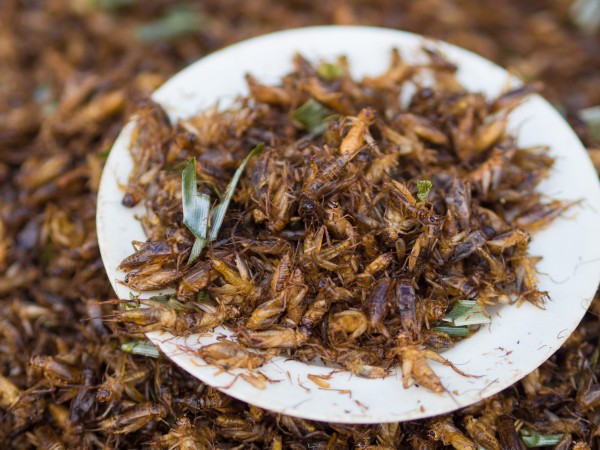
Bugs are not exactly more environmentally friendly and ethical food sources
Still, there are reasons for people to be wary of eating bugs. Would farming them really be more environmentally sound and ethical? Cricket farms, for instance, put the animals in plastic bins laid with cardboard walls they can climb and lay eggs on. Because they need humid temperatures and can easily drown in water, damp sponges are used in the bins to regulate humidity and provide a drinking source. Lewis Bollard, who runs the farm animal welfare program at Open Philanthropy, recently published excellent points about industrializing insect meat production. The market for human-edible insects has already been overshadowed by the market for insects as feed for farm animals. Most of them had been raised to be fed to farmed fish and chickens, or are ground up into pet food. Thus, it is not an alternative to factory farming, but is instead a supplier. Feeding corn to insects that will be fed to chickens is also less efficient than just feeding the corn to the chickens directly. Moreover, humans are now expanding their circle of moral concern toward animal welfare. The number of pets in the U.S. has more than doubled since the 1970s, while the number euthanized per year has fallen dramatically. Finally, there are around a trillion insects already raised and killed on farms every year despite the fact that the western world is still at the beginning of the insect-food boom. As they also live very short lives, the annual total encompasses many generations, with only between 79 billion and 94 billion farmed insects alive at any given time. (Related: Insect population COLLAPSE a death warning for all humanity.) The suffering this industry can bring to insects is on a massive, definitely non-ethical scale. Visit FrankenFood.news for more information about what could happen if the U.S. food supply continues to dry out. Watch the video below for more information about the unknown risks of eating insects. This video is from the Pulpito Pulpo channel on Brighteon.com.More related stories:
Canadian government spends $8.5 million on insect production facility to force people to eat BUGS.
Ground up beetles found in yogurt – carmine serves as insect-based food coloring ingredient.
Insect cuisine coming soon to a store near you – Can bugs feed the world?
Sources include: TheNewAmerican.com Vox.com Brighteon.comVoting machine outages, paper shortages mar election in America’s third largest county
By Kevin Hughes // Share
An invisible assault: How everyday heavy metals sabotage brain health
By willowt // Share
Pentagon warns of China's rapidly expanding nuclear arsenal
By kevinhughes // Share
FCC grounds new Chinese drones in sweeping security move
By avagrace // Share
The methylation switch: Scientists identify diet that can turn back the cellular clock
By jacobthomas // Share
Renaissance or Ruin: A wake-up call for cultural revival and self-sufficiency
By kevinhughes // Share
Weight loss in midlife may trigger brain inflammation, study finds
By avagrace // Share











